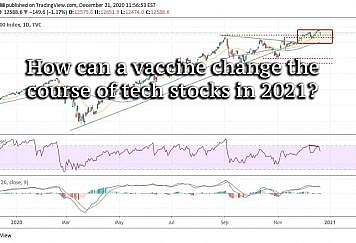The rise of the digital business landscape has forced countless businesses to rethink their strategies. It has reshaped brand-consumer interaction and redefined how internet shoppers interact with modern-day companies.
It has also revolutionized the online shopping experience and turned it into an innovative, convenient, and customer-centric approach to buying. Nowadays, shoppers need only a device and reliable internet connection to browse thousands of brands and buy everyday items with a few taps on their touchscreens.
However, despite the benefits of digital shopping, most organizations still struggle with facilitating the multi-touchpoint sales funnels consumers now demand. In other words, companies still fail to see the importance of providing their customers with unprecedented digital experiences.
Since delivering top-grade customer experience determines the success levels of modern-day businesses, let’s consider why every organization should focus on accomplishing this goal.
Digital transformation
A digital transformation is no longer an option but a necessity for every modern business. Customer-centricity isn’t a trend but a new way of conducting business. While many companies haven’t yet transformed their operations, most organizations are well on board with the latest digital trends, regulations, policies, etc.
Digital transformation provides countless opportunities to attract more consumers, send them down the sales funnel, and reap more revenue. Digital sales options are the best example of how easily brands can disturb online markets by addressing the immediate needs of their target audiences.
You can hardly find serious companies that don’t offer digital services today. Aside from sales, consumers expect brands to digitalize every phase of the customer experience cycle. On the other hand, the digital approach helps businesses gather a broader target audience, engage with markets more effectively, and increase sales.
Convenience and immediacy mean the world to customers as they need the easiest and most effective ways to tap into the services and products they need daily.
Even though traditional marketing and communication channels are still surviving, the world is moving toward digital communications through online channels that bring more customer traffic than companies could ever hope to see.
Ecommerce businesses are the best proof of the efficiency of automated communication channels. For example, Fast Simon, the cutting-edge retail ecommerce merchandising service provider, offers an online visual merchandising platform for small and mid-sized businesses.
Clients harness the platform’s power of automation and optimization to boost website traffic, generate more leads, increase conversions, and even scale operations to maximize sales. None of that would have been possible without the power of digital transformation.
Tech-savvy consumers demanding efficiency
Gone are the days when only highly educated people could access technology. Nowadays, kids learn technology in school and live with it early on. Modern-day consumers are more tech-savvy than most businesses may know.
They use potent smartphones, internet-enabled and automated computing devices, and AI-powered digital assistants to engage with brands, browse their products and services, and make purchasing decisions.
Most internet shoppers won’t even interact with a brand if they don’t have two essentials:
- A ubiquitous mobile app experience
- Omnichannel communications
In other words, businesses need well-designed, digitally optimized apps to deliver exceptional user experience in every customer journey phase. That allows brands to attract more customers, keep them engaged, and build meaningful relationships with the target audiences.
While businesses should also have optimized and easy-to-navigate websites, conducting business through only one channel is no longer sufficient. New times demand new measures.
Capturing customer feedback
Traditional marketing and advertisement have also changed in the objective.
Ten years ago, businesses focused on putting their products and services in front of as many customers as possible. They didn’t consider their consumers’ needs, preferences, and everyday problems.
Fast forward to today, and we have a completely different scenario. Nowadays, brands invest heavily in high-end customer-centric brand intelligence solutions that provide insights into what makes their customers tick. That wouldn’t be possible without digital communication channels.
Aside from measuring feedback and marketing performance, digital channels also help businesses engage with consumers, establish relationships, and build brand loyalty based on mutual trust and understanding.
Companies now want to know what customers think about their products and services. They work round the clock to provide valuable solutions and help consumers improve their quality of life by solving everyday problems. You can safely say that digital transformation has helped usher in a brand-new era for business-customer relationships.
Instead of focusing on selling more, businesses now work toward tailoring their services to meet the unique needs of the target audiences. By doing so, they are gathering insights on the most effective ways to improve each interaction and continually investing in the customer experience.
Conclusion
Customer experience is one of the critical driving factors of business success in 2022. Modern consumers demand personalized, accurate, relevant experiences to hold brands in high regard.
On the other hand, brands work hard to provide customers with an exceptional digital experience across all communication channels.
Customer experience has become a valuable resource for modern brands that should stand at the forefront of every marketing and sales strategy.
Follow TechStrange for more!





